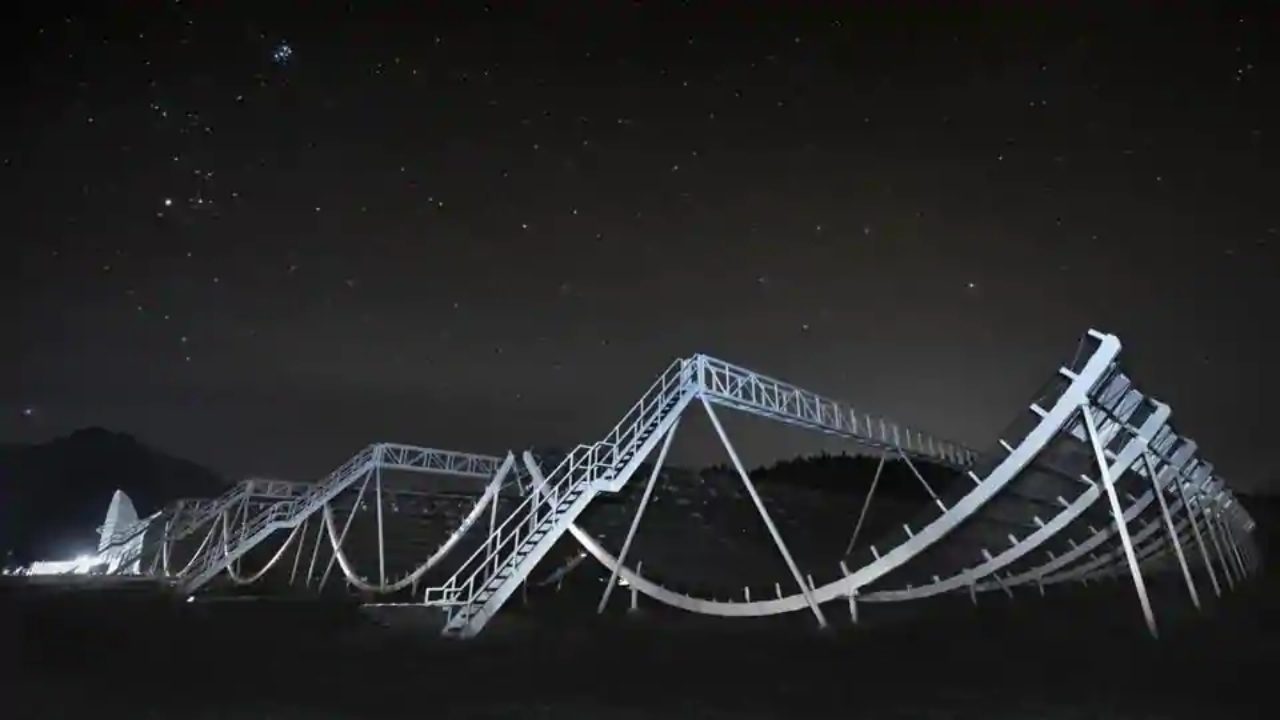Researchers may have come significantly closer to finding an answer for one of the longest-held mysteries in the field of astronomy — quick, powerful bursts of radio waves that have been difficult to detect or trace back to any known natural source in the universe. One of the most powerful forms of radio energy in the universe that detectors on Earth can pick up on is ‘fast radio bursts’ or FRBs. These bursts rarely last longer than a few milliseconds and cover a range of frequencies. The bursts are usually single spikes in energy, which are stable and consistent for the short periods of time for which they last. Astronomers today are still unaware of the sources of these bursts — what event in the cosmos could be causing thousands of these powerful bursts every single day. At a recent meeting of the American Astronomical Society, scientists at a Canadian telescope centre shared that they detected 13 new fast radio bursts (FRBs) in a mere two months of observations. The newly-detected bursts are rare “repeaters” — scientists had observed a series of six flashes from the same spot in the sky, which they hope can make it easier to pin down the source of the signal. [caption id=“attachment_5892311” align=“alignnone” width=“1280”] The signal discovered is among the earliest results from using the Canadian Hydrogen Intensity Mapping Experiment (CHIME) – a radio telescope inaugurated in 2017. Image: Twitter/SKA telescope[/caption] Only one other ‘repeating’ FRB has ever been found in the history of astronomy. Interestingly, astronomers found that the repeated burst they discovered has the same structure as the only other repeater they have a record of. The researchers that made the discovery think that the origin of these bursts is a region in space roughly 1.5 billion light-years away from Earth. “These things are coming to us from halfway across the universe and we don’t really know anything about them. Isn’t that exciting?” lead author of the study, Dr Shriharsh Tendulkar from McGill University,
told the university press.
#ICYMI scientists have detected some rather interesting radio signals from the depths of intergalactic space thanks to the Canadian Hydrogen Intensity Mapping Experiment. 💫 Find out more about #CHIME here: https://t.co/kMS3vINpof ✨ pic.twitter.com/70W6HjGArD
— Canada (@Canada) January 13, 2019
The radio waves that were detected are very likely getting twisted, scattered or absorbed by gas and plasma during their travels through space, which prompts the researchers to think all thirteen bursts came from turbulent parts of the universe – from near supernova remnants or black holes. “We are trying to build up clues and trying to understand whether the repeating fast radio bursts and single fast radio bursts are different populations. Do they come from different objects? Or are they related in some way to each other? We are trying to figure these things out, so that’s really exciting,” Tendulkar told university press. When the Canadian Hydrogen Intensity Mapping Experiment (CHIME) detected the new bursts, it was only running at a fraction of its capacity, and the team is excited to see how many more will appear in their data now that the instrument is fully up and running. The findings and results from the study are published in Nature.


)
)
)
)
)
)
)
)
)



